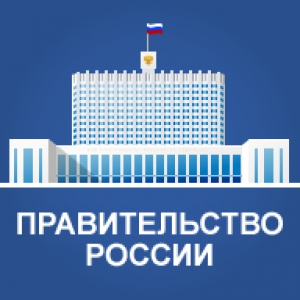How did we live without Olivier and where did Santa Claus and Snegurochka come from? Let's look into history

The winter holidays of our ancestors were a single cycle that lasted more than two weeks. Before January 1 became strongly associated with the celebration of the New Year, three key moments stood out in traditional celebrations: Christmas, Generous Evening and Epiphany, which together made up Kolyadas.
According to the HEAD of the department of folklore and culture of the Slavic peoples of the Institute of Art History, Ethnography and Folklore of the Center for Research of Belarusian Culture, Language and Literature of the National Academy of Sciences of Belarus Tatyana Volodina, in the annual circle of our ancestors, the night from December 31 to January 1 did not stand out with anything remarkable. It was Christmas that was considered the main one, which, as now, Catholics celebrate according to the Gregorian calendar - December 25, and Orthodox - according to the Julian calendar - January 7.- The holiday is preceded by a long Filippovsky fast. The restrictions applied not only to food, but to all kinds of entertainment events, such as weddings. Nature, as well as, in fact, the life of people, froze in anticipation for a period, - explains Tatyana Vasilievna. - If in Europe this holiday is cheerful and colorful, then in our country it is family and more restrained, including the menu.
The main dish of the obligatory fasting festive table was kutya - porridge cooked from oatmeal or pearl barley. At one time, our ancestors used ordinary grain for its preparation, symbolizing rebirth and eternal life.
- When the first stars appeared in the sky, hay was laid on the table as a sign that Jesus Christ was born in a manger in a stable. They covered it with a white elegant tablecloth and put kutya. Then other lean dishes appeared on the table: mushroom kvass, cabbage, cucumbers, vinaigrette. Pancakes were baked on the water, and they were served with poppy seed dressing. There was no mention of any ALCOHOL. Dinner was held in a calm, restrained tone, - says the interlocutor. - Tomorrow (December 25 - for Catholics and January 7 - for Orthodox) carol festivities began. Every corner of Belarus had its own peculiarities.
For example, in the Vitebsk region in the Lepel district, a bright and colorful game "Tereshka's Marriage" was held with dances and funny scenes. The youth played a playful wedding, trying on the role of grooms and brides. In the southern region, processions of carolers began to walk around the villages at that time: they wore a carol star, sang songs and received treats for this.
- In the Mogilev region, there was a very beautiful custom of transferring the icon-candle. In the house where the image in honor of the Nativity of Christ was located, the villagers performed rituals. After that, the icon was transferred to the next house, - Tatyana Volodina describes the traditions of her ancestors. - The next point is the old New Year or, as the Belarusians called it, "Shchedryk". The hostesses generously placed on the table a variety of pickles, sausages, greaves, vereshchaka, lush pancakes. Alcohol was also allowed.
That night, mummers appeared on the village streets: a Goat, a Horse, a Crane, who tried to peck at young girls so that they would be married sooner. By the way, many of these rituals have survived to this day and received the status of the intangible cultural heritage of the Republic of Belarus. For example, the bright custom of "Koniki", which exists in David-Haradok to this day.
Civil New YearThe third link in the winter holidays for our ancestors was Epiphany. The night before, they dined with lenten kutya and hid all carol outfits in chests until next year. The night from January 18 to January 19 is still called the most mysterious of the year: it is on it that the peak of girlish fortune-telling, which is considered the most truthful, falls.
- Another interesting ancient rite - "Pull Kolyada on the oak tree" in the village of Noviny, Berezinsky district, MINSK region - has survived to this day. It is celebrated on January 21 and completes the period of the Kolyadny holidays, - Tatyana Vasilievna gives an example. - Women make a ceremonial doll out of a sheaf of straw, decorate it, put it on an old wagon wheel and drag it to an oak tree standing alone on the edge of the village. Young guys pull it up a tree along with a pot of kutya, thus sending the winter holidays to the world where their ancestors are and mythological characters live. Here is such a long and fairly regulated period of winter holidays for our ancestors: every day, evening and night were held according to the rules.
As for the New Year, which we used to celebrate on January 1, then, according to Tatyana Volodina, it came to us after the October Revolution. In those years, they tried in every possible way to eradicate the religious aspect from the winter holidays - no mention of the Nativity of Christ or Baptism. An active atheist policy was carried out, which led to the emergence of the so-called civil New Year.
- A completely new mythology began to be developed, which we are well aware of: with Olivier salads and herring under a fur coat, tangerines and other attributes, - the expert clarifies.
And here she is beautiful...The first mention of one of the most important New Year symbols dates back to the 16th century. The tradition of decorating the Christmas tree originated in Germany. Belarus had its own special carol symbol - a straw spider. This unusual decoration can now be seen in museums. Its main part is 12 straws. In general, the design marked the creation of a new world, the birth of a new sun.
- Peter I brought the Christmas tree to the East Slavic lands. True, the tradition did not last long. The next mention of the Christmas tree, along with Santa Claus and the Snow Maiden, dates back to the 19th century. Immediately it was placed exclusively in noble houses on the eve of Christmas. After the revolution, the Christmas tree again disappears from the holiday. In the 60-70s, according to the recollections of our grandmothers, the forest beauty began to be installed in village councils, schools, - says the interlocutor. - Later it was decided that every Soviet person should rejoice at the New Year tree - they began to decorate it in houses.
I must say that Grandfather Frost, who today carries a huge bag of gifts behind him and fulfills all the wishes of the children, in the 19th century was the embodiment of a severe winter cold.
- The main characters of the New Year's holiday - Father Frost and his granddaughter Snegurochka - are not primordial, but literary, - explains Tatyana Volodina and suggests recalling Ostrovsky's fairy tale "The Snow Maiden". - These heroes migrated from such works to our holiday. First, they appeared in official scripts that were prepared in schools and enterprises. Over time, Snowflakes, Snowmen and other fairy-tale characters were added to the company.
For New Year's holidays in the old days they dressed smartly, but there were no signs and superstitions regarding the color and style of clothing, the symbol of the year. According to scientists, this is a distinctive feature of modern culture, moreover, a well-thought-out marketing ploy.
| Marina VALAKH, newspaper "7 days", photo by Alexander KHITROV.
REPRINTING OF THIS MATERIAL (IN WHOLE OR IN PART) OR OTHER USE OF THIS MATERIAL IS PROHIBITED
Read also:
Read together with it:
- Повышенное внимание - безопасности пожилых. В Могилеве обсудили работу по Директиве №130 октября, Могилев. Сегодня в Могилевском облисполкоме прошло заседание, посвященное реализации Директивы Президента Республики Беларусь от 11 марта 2004 г. №1 "О мерах по укреплению общественной безопасности и дисциплины". Особое внимание во время обсуждения уделили безопасности пожилых людей, передает корреспондент БЕЛТА.Как отметил во время своего доклада заместитель председателя Могилевского ...
- В Дятловском районе мужчина угрожал брату ножом и поджогом, возбуждено уголовное дело29 октября, Гродно. Житель Дятловского района после совместной пьянки угрожал брату ножом и поджогом хозяйственной постройки. Об этом сообщили БЕЛТА в пресс-службе УВД Гродненского облисполкома.Двое братьев, жителей Дятловского района, вместе распивали спиртное и перебрали с алкоголем. Один из них, 53-летний мужчина, разгорячившись, затеял конфликт. Когда словесные аргументы иссякли, он взял канис...
- На БУТБ началась реализация желатина для фармацевтической промышленности28 октября, Минск. На Белорусской универсальной товарной бирже началась реализация желатина для фармацевтической промышленности, рассказали БЕЛТА в пресс-службе БУТБ. БУТБ провела первые биржевые торги по реализации специализированного желатина для предприятий фармацевтической отрасли Республики Беларусь. По итогам торговой сессии заключена сделка по покупке 4......
- Около 41 тыс. случаев инсульта ежегодно отмечается в Беларуси27 октября, Минск. Около 41 тыс. случаев инсульта ежегодно происходит в Беларуси. Об этом журналистам сообщил заведующий отделом неврологии и нейрохирургии Минского научно-практического центра хирургии, трансплантологии и гематологии Сергей Марченко на мероприятии, приуроченном ко всемирному Дню борьбы с инсультом, передает корреспондент БЕЛТА. "С начала этого года в нашем центре прошли уже лечени...
- Чего ожидать от «одной из самых рискованных» поездок ТрампаДональд Трамп начал турне по Азии, в ходе которого встретится с лидерами ключевых стран, включая Си Цзиньпина. Почему эта поездка может оказаться сложнее, чем недавние визиты в Европу и на Ближний Восток — в статье РБК Дональд Трамп Какие встречи запланированы в ходе турне Президент США Дональд Трамп вылетел из Вашингтона поздним вечером в пятницу, 24 октября, и утром в субботу его борт приземлитс...
- С начала года Московская область увеличила экспорт свинины на 35% в стоимостном выраженииМосковская область продолжает укреплять позиции одного из ведущих экспортеров продукции агропромышленного комплекса в России. По итогам 9 месяцев с начала года регион нарастил экспорт свинины на 35% по стоимости. В натуральном выражении объем поставок составил 85 тысяч тонн, что на 17% больше, чем за аналогичный период прошлого года. В Министерстве сельского хозяйства и продовольствия Московской о...
- Совместные проекты и обмен опытом. В каких направлениях Беларусь и Казахстан готовы развивать сотрудничество в АПК23 октября, Минск. Беларусь готова делиться с Казахстаном опытом в аграрной сфере и заинтересована в дальнейшем расширении партнерства. Об этом заявил первый заместитель премьер-министра Беларуси Николай Снопков на первом Белорусско-казахстанском аграрном форуме, который прошел в Астане, сообщает БЕЛТА со ссылкой на пресс-службу правительства. "Беларусь действительно обладает значительным опытом, ...
- Беларусь и Алтайский край намерены увеличить биржевую торговлю сельхозпродукцией23 октября, Минск. Поставки белорусской мясомолочной продукции в Алтайский край и закупки зерна и семян для аграрного сектора Беларуси определены в качестве магистральных направлений сотрудничества в сфере электронной биржевой торговли. Такая договоренность достигнута по результатам встречи представителей Белорусской универсальной товарной биржи с делегацией деловых кругов Алтайского края, которая...




























































